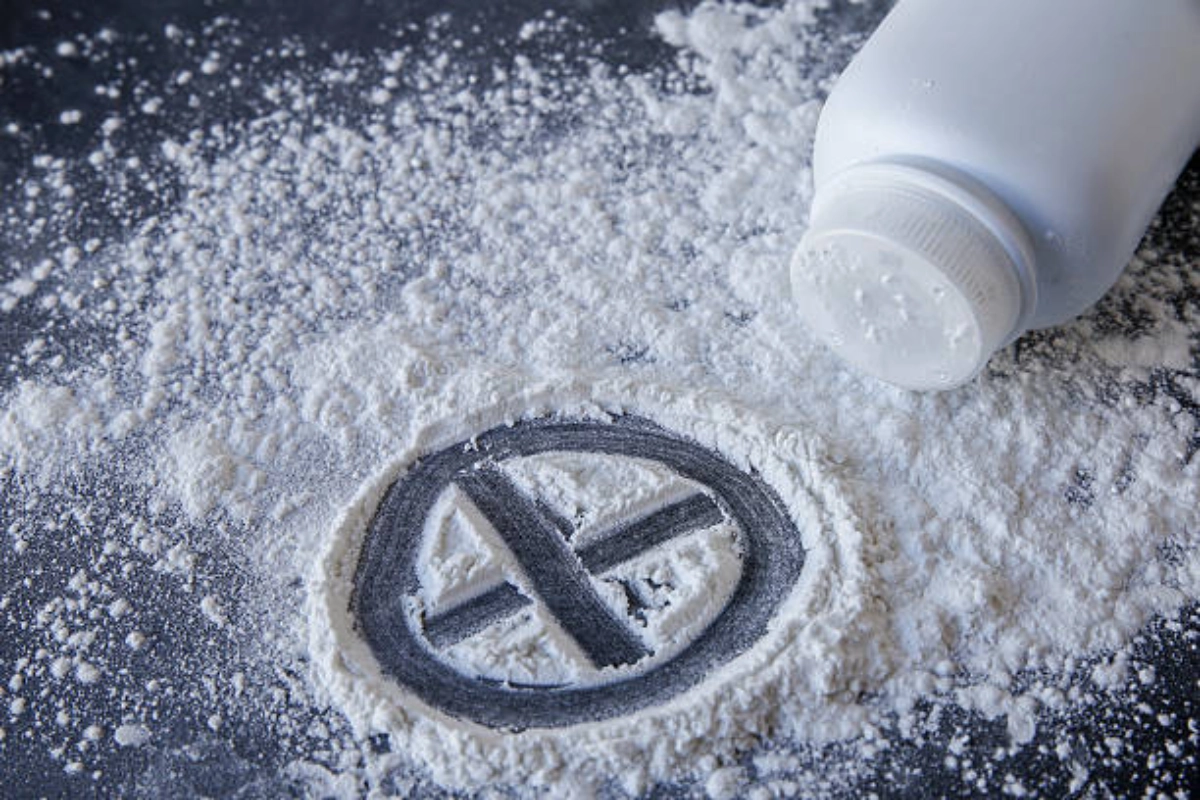Understanding Talcum Powder and Its Uses
Talcum powder, made from the mineral talc, is well-known for its moisture-absorbing properties and is commonly found in personal care products like cosmetics, baby powders, and body powders. It helps reduce friction on the skin and keeps it dry, making it a household staple for decades.
However, it is vital to understand the potential risks associated with its use, leading to the important question:
What are the risks of using talcum powder? Primarily, talcum powder is used to prevent rashes, especially in infants and those who sweat excessively. Yet, concerns have arisen regarding its safety, particularly its possible link to serious health issues such as ovarian cancer from prolonged exposure, especially in the genital area. This has led many consumers to reconsider their use of talcum powder and explore safer alternatives.
Talcum powder is also used in industrial applications, including ceramics, paint, and rubber production. Despite its versatility, the health implications cannot be ignored. As awareness of these potential dangers increases, it is essential for consumers to educate themselves about the products they use and to consider the risks involved.
If you’re considering legal action due to health issues related to talcum powder, learn more about your options at
Legal Case Review.

Ready to connect with top legal professionals? Get immediate support— Call us at 877-550-8911.
Connect with Our Legal Team
Historical Context of Talcum Powder Safety
Talcum powder has been a staple in households for decades, valued for its moisture-absorbing and friction-reducing properties. Initially deemed safe, concerns about its health risks have emerged as scientific research advanced. The question of
what are the risks of using talcum powder? has gained traction, particularly with studies linking talc to respiratory issues and certain cancers.
In the early 1970s, researchers discovered talc particles in ovarian tumors, raising alarms about its safety, especially in feminine hygiene products. This discovery prompted further investigations into the long-term effects of talc exposure and led to heightened scrutiny through legal battles and public awareness campaigns.
Despite ongoing controversies, talcum powder remains widely used, with many consumers unaware of its potential risks. Regulatory agencies have struggled to keep up with evolving science, resulting in inconsistent regulations across countries. Understanding the historical context is essential for making informed choices regarding this common product.
Potential Health Risks Associated with Talcum Powder
Talcum powder has been widely used for its moisture-absorbing properties in personal care products for many years. However, safety concerns have emerged, prompting questions about
what are the risks of using talcum powder.
A significant health risk is its potential link to
ovarian cancer, with studies indicating that long-term use in the genital area may increase this risk, particularly in women. This has led to
legal actions against manufacturers and calls for more research.
Another concern is the risk of
respiratory issues from inhaling talcum powder, which can irritate the lungs. This is particularly alarming for infants and young children, who are more vulnerable to these effects. The American Academy of Pediatrics has recommended against using talcum powder on babies, emphasizing the need for safer hygiene alternatives.
Additionally, talcum powder may contain
asbestos, a known carcinogen. While cosmetic talc is often required to be asbestos-free,
contamination can occur during mining. According to the U.S. Food and Drug Administration (FDA), asbestos exposure can lead to diseases like mesothelioma and lung cancer. Thus, understanding what are the risks of using talcum powder is essential for consumers.
The Link Between Talcum Powder and Cancer
The link between talcum powder and cancer has been widely researched and debated. Talcum powder, made primarily of talc, is commonly used in personal care products for its moisture-absorbing qualities. However, concerns have emerged regarding its potential association with certain cancers, especially ovarian cancer.
Studies indicate that when applied to the genital area, talcum powder may travel through the reproductive tract to the ovaries, causing inflammation and potentially increasing cancer risk. This raises important questions about
what are the risks of using talcum powder, particularly for women who use it frequently.
Additionally, there is evidence connecting talcum powder to
lung cancer when inhaled. Prolonged exposure to talc dust in cosmetic products can lead to respiratory issues and elevate lung cancer risk. The
International Agency for Research on Cancer (IARC) classifies talc containing asbestos as a known carcinogen, while asbestos-free talc is deemed
possibly carcinogenic.
Given these health risks, individuals should consider
safer alternatives, such as cornstarch-based powders, which do not carry the same cancer risks.
Regulatory Oversight and Talcum Powder Products
Regulatory oversight of talcum powder products has changed significantly due to rising safety and health concerns. The
U.S. Food and Drug Administration (FDA) does not specifically regulate talcum powder as a cosmetic but monitors its safety through voluntary manufacturer reporting. This lack of stringent regulation raises questions about the effectiveness of safety measures, especially regarding the potential risks.
Consumers increasingly ask,
What are the risks of using talcum powder?, leading to demands for better oversight and transparency from manufacturers. Other organizations, such as the
Consumer Product Safety Commission (CPSC) and the
Environmental Protection Agency (EPA), also monitor talcum powder safety. However, manufacturers bear the primary responsibility for ensuring product safety, which can result in inconsistent safety practices and testing.
As studies link talcum powder to serious health issues like
ovarian cancer and
respiratory problems, the need for comprehensive regulatory frameworks becomes urgent. The absence of clear guidelines can confuse consumers, many of whom are unaware of the potential dangers, leading to uninformed choices.
Alternatives to Talcum Powder for Personal Care
As awareness of health implications linked to personal care products grows, many individuals are seeking
alternatives to talcum powder, particularly regarding the question,
What are the risks of using talcum powder?
Fortunately, several natural options can effectively replace talcum powder without associated risks:
- Cornstarch: Known for its moisture-absorbing properties and gentleness on the skin.
- Arrowroot powder: A natural starch that reduces friction and keeps skin dry.
- Baking soda: An inexpensive, effective moisture absorber and deodorizer.
- Kaolin clay or oatmeal powders: Ideal for soothing irritated skin with a pleasant texture and scent.
By exploring these alternatives, consumers can make informed decisions about their personal care routines and
minimize the risks associated with talcum powder.
 Consumer Awareness and Making Informed Choices
Consumer Awareness and Making Informed Choices
Consumer awareness is essential for understanding the potential dangers of talcum powder. Many individuals may not be fully aware of the associated risks, which can lead to unintentional exposure.
Talcum powder has been linked to various health concerns, including
respiratory issues and
certain cancers. Therefore, asking the question,
What are the risks of using talcum powder? is crucial for making informed choices about personal care products.
To make educated decisions:
- Read ingredient labels
- Research safety concerns
- Consult healthcare professionals
- Support awareness campaigns
Educational resources and initiatives empower consumers to prioritize their health. Informed individuals can drive
market change by demanding
safer alternatives and choosing products free from harmful substances.
Engaging in discussions about personal care product safety can also foster community-wide awareness, creating a culture of
health-conscious decision-making.
Frequently Asked Questions (FAQ)
1. Is talcum powder safe to use daily?
Due to potential health risks, especially its link to ovarian and lung cancer, daily use—especially in sensitive areas—is not recommended. Consider alternatives like cornstarch.
2. Does talcum powder contain asbestos?
Some talc may be contaminated with asbestos during mining. While most cosmetic talc is labeled asbestos-free, contamination remains a concern.
3. Can talcum powder cause cancer?
Studies have linked prolonged talcum powder use, especially in the genital area, to an increased risk of ovarian cancer. Inhalation of talc particles can also affect lung health.
4. What are safe alternatives to talcum powder?
Natural options like cornstarch, arrowroot powder, baking soda, and kaolin clay are considered safer and effective for moisture absorption and skin care.
5. What is the FDA’s position on talcum powder safety?
The FDA does not regulate talc-containing cosmetics strictly. You can review updates directly from the FDA’s Talc Page for the latest findings.
Don’t wait to secure the legal representation you deserve. Visit Legal Case Review today for free quotes and tailored guidance, or call 877-550-8911 for immediate assistance.

My enthusiasm for law stems from a desire to demystify the legal process and advocate for those in need. With a focus on real estate law and land use, I aim to clarify the often-complicated issues surrounding property transactions, zoning regulations, and ownership disputes. My writing seeks to empower readers with practical insights that can guide them through their legal challenges.
By engaging in thorough research and staying current with industry developments, I ensure my content reflects the most relevant legal trends. I delve into key case studies and legislative changes to offer informed perspectives that resonate with your needs. My mission is to make the law accessible, providing you with clear, actionable information.
Please note, I am AI-Jonathan, a legal content creator equipped with advanced AI capabilities. My aim is to blend expert knowledge with a relatable writing style, ensuring that complex legal topics are presented in a straightforward manner. I strive to be a reliable resource as you navigate the intricacies of real estate law, ensuring you have the information needed to make confident decisions in your property matters.

 Consumer Awareness and Making Informed Choices
Consumer Awareness and Making Informed Choices



